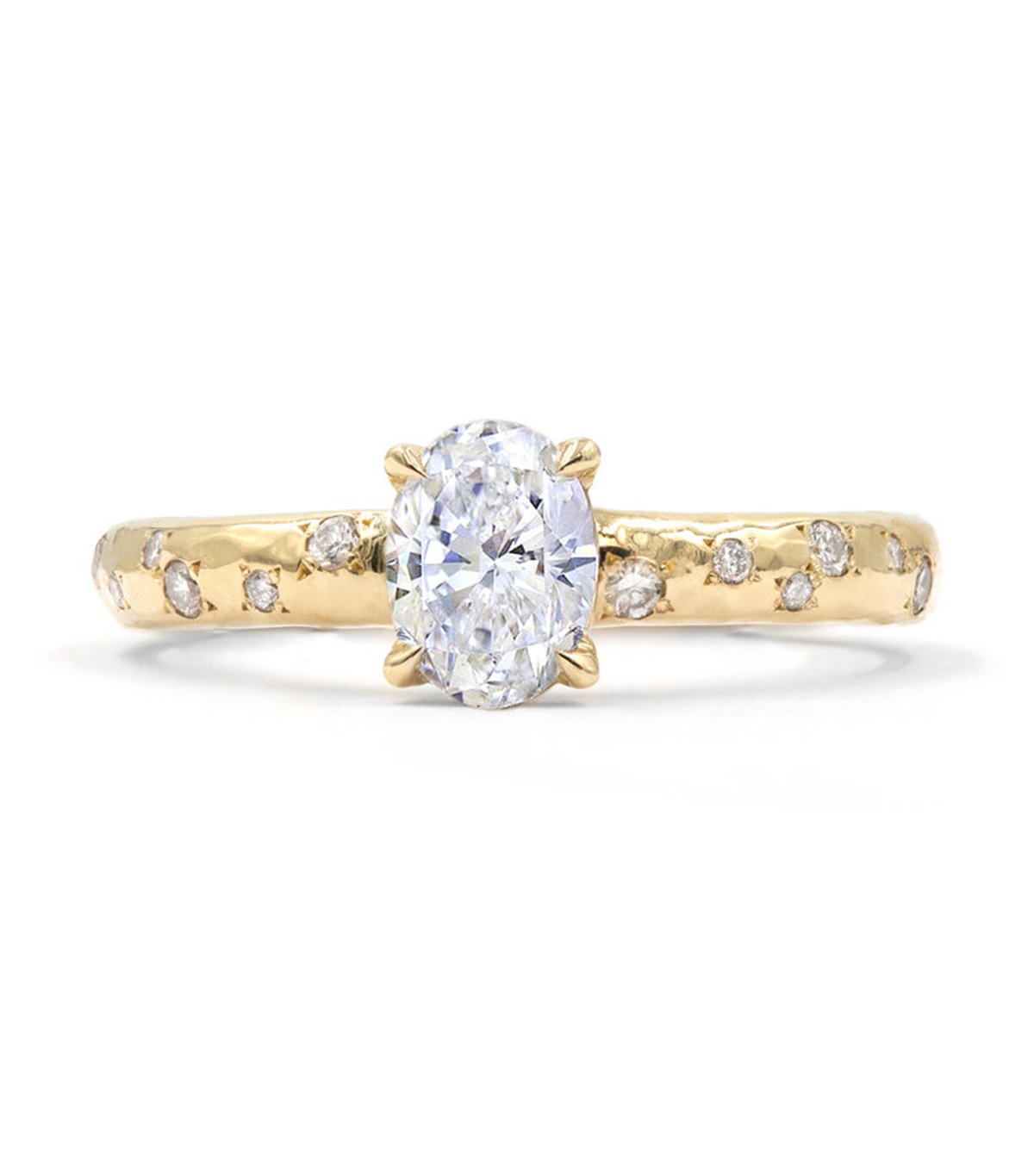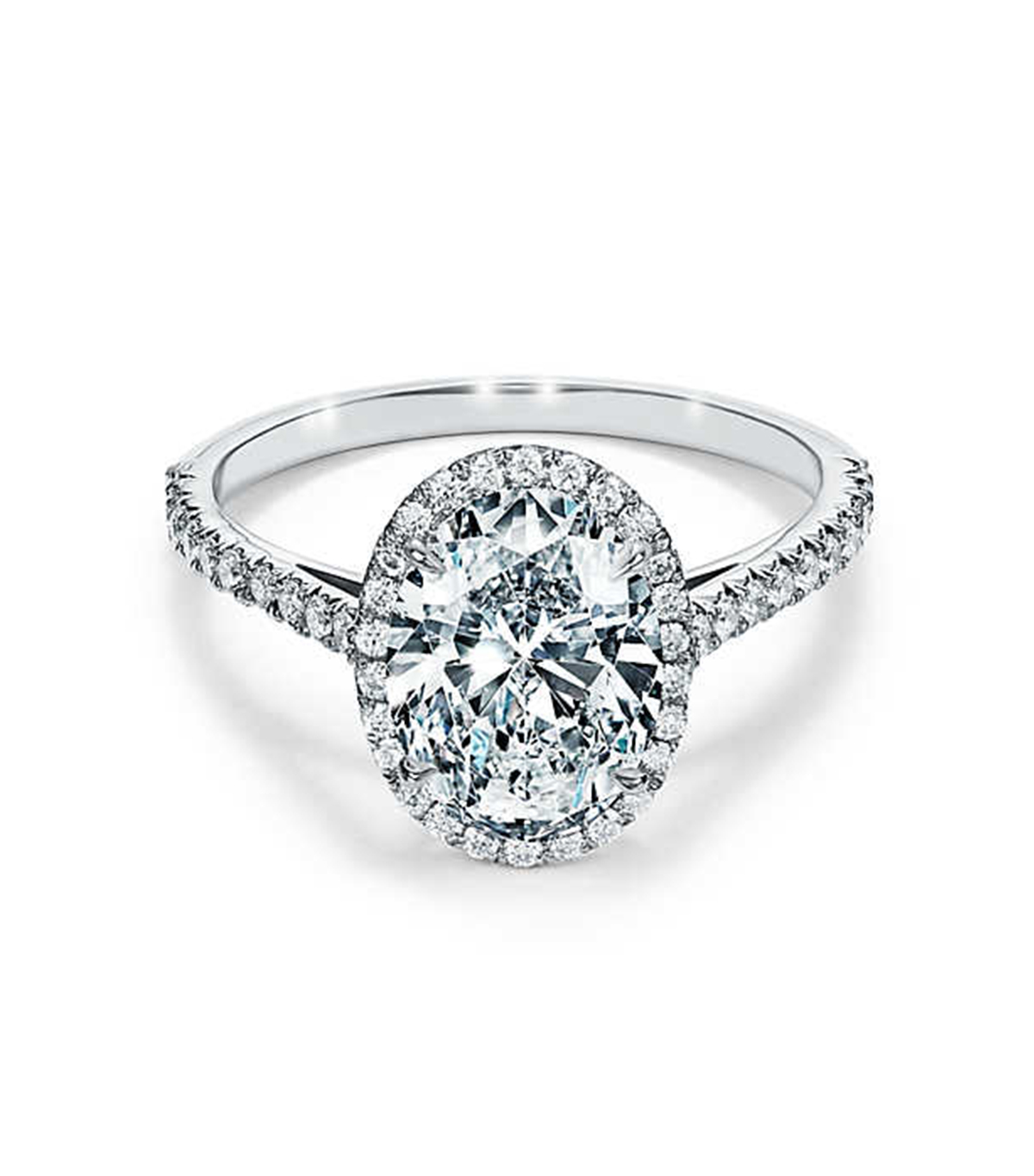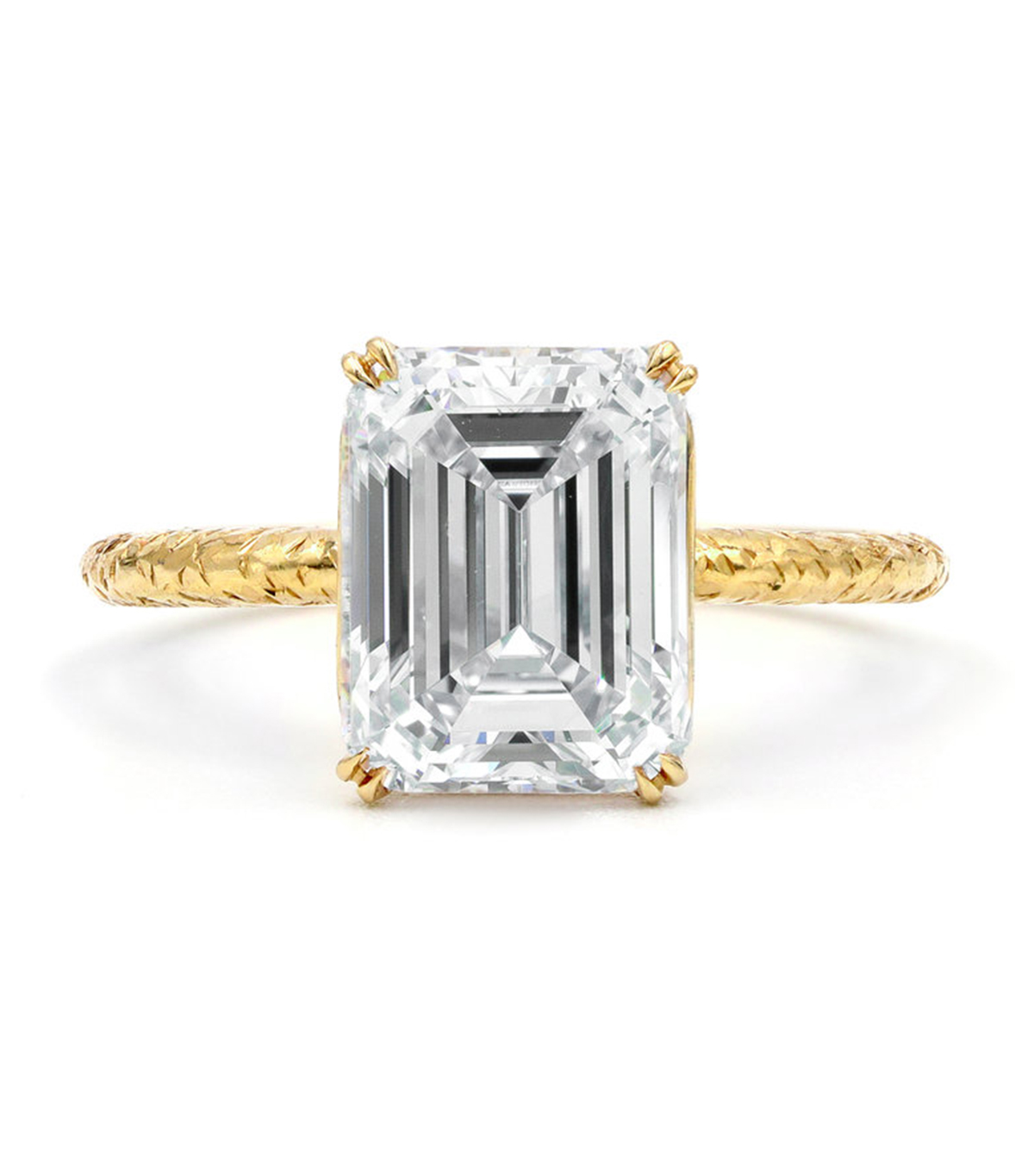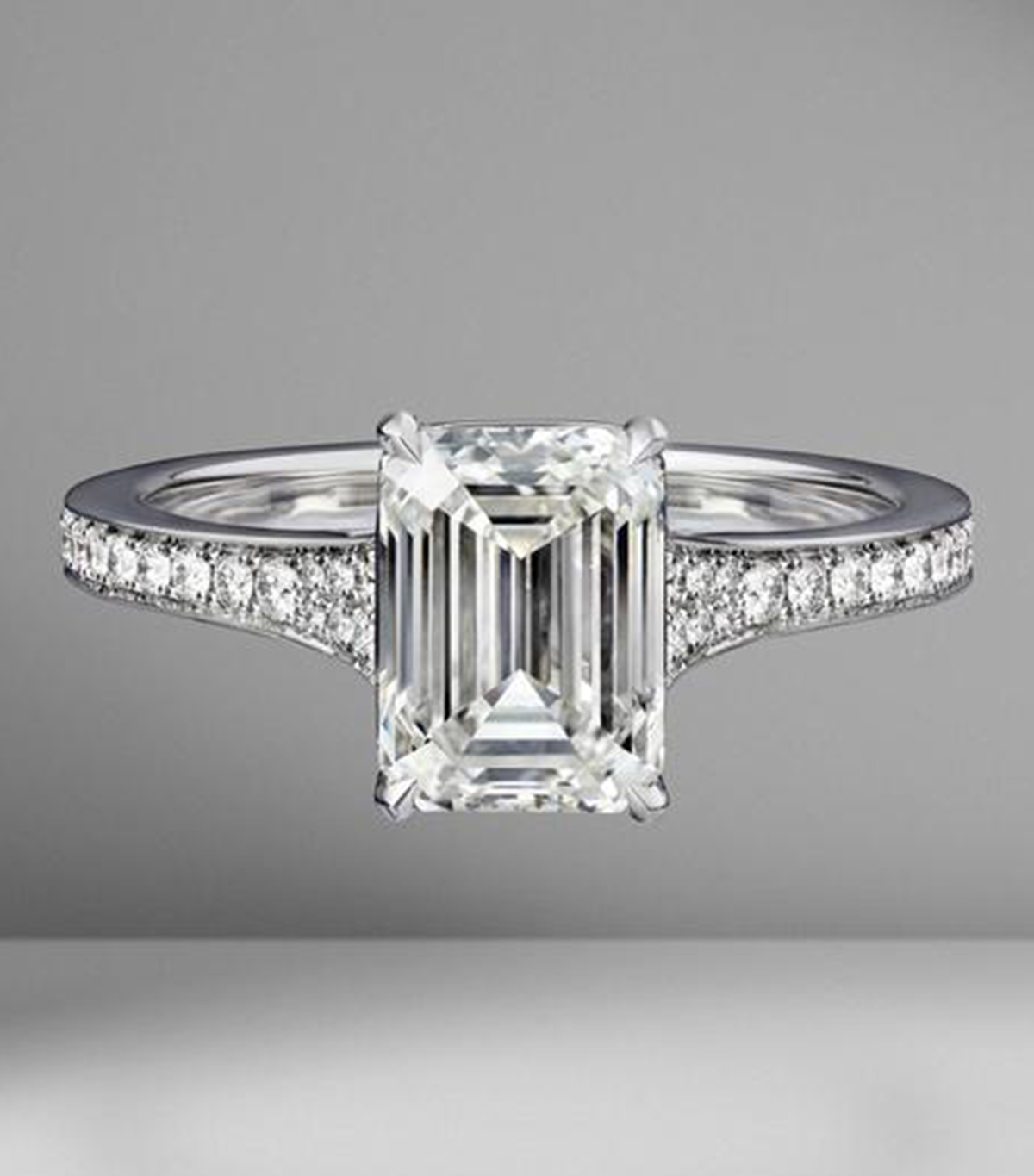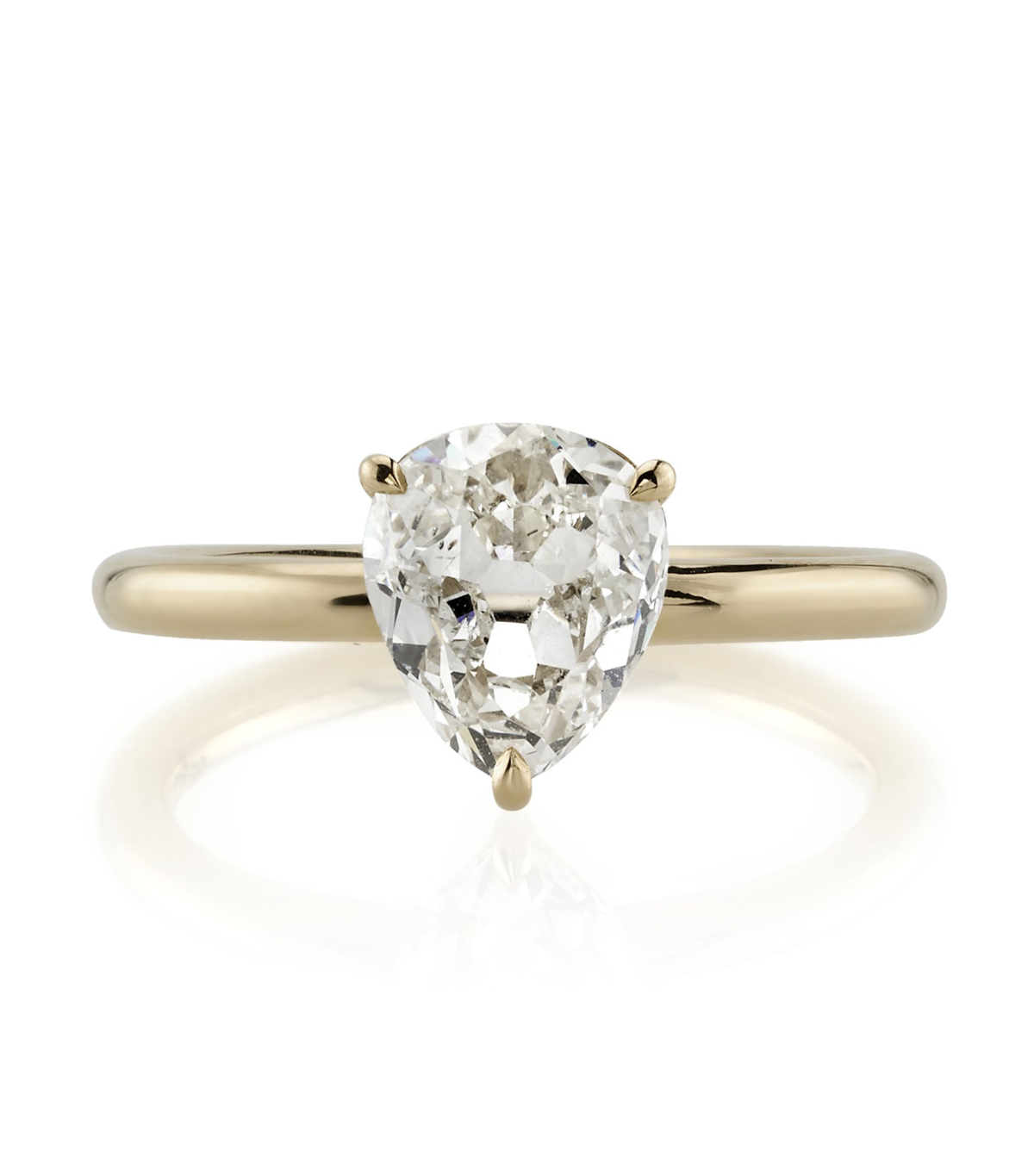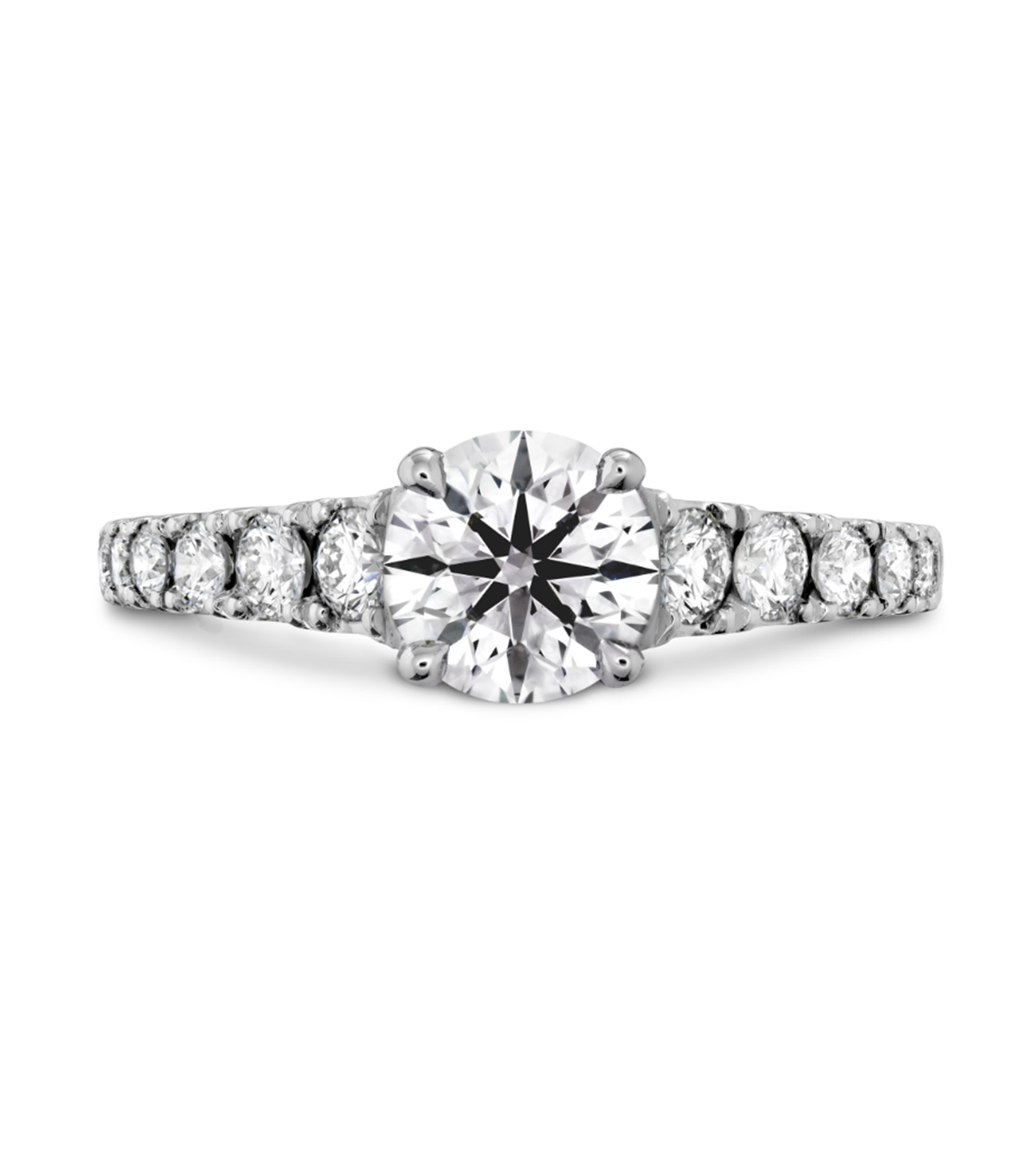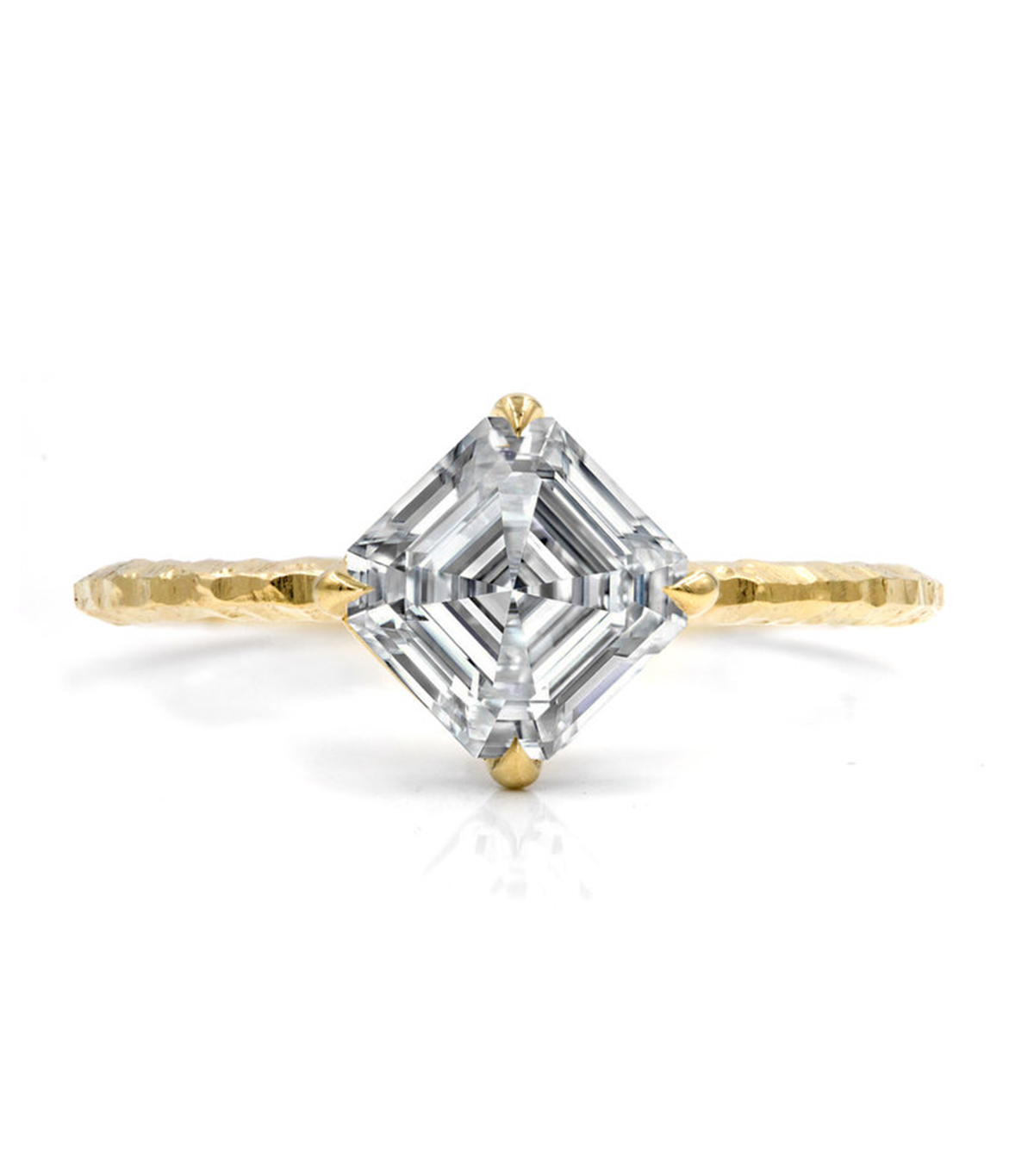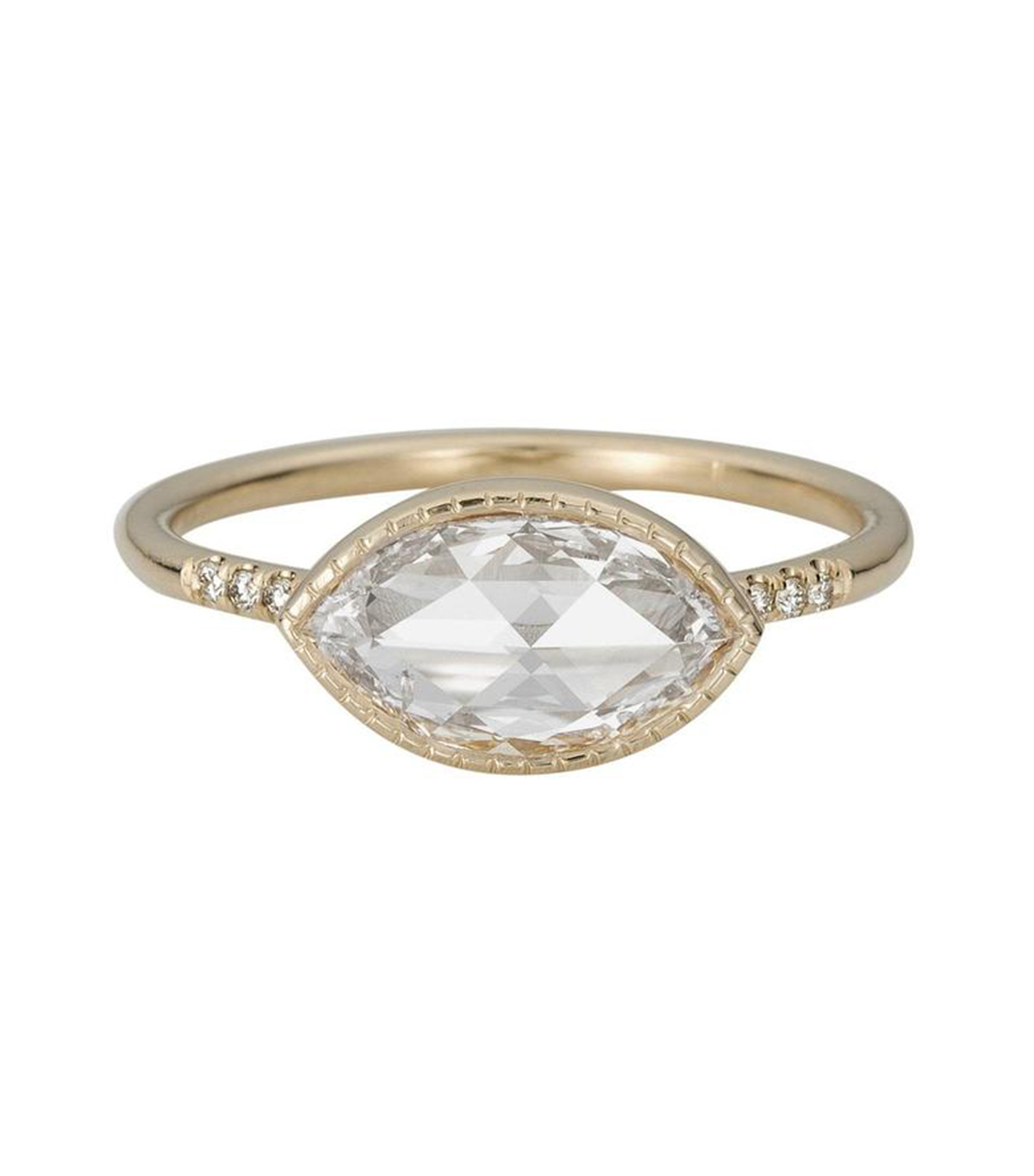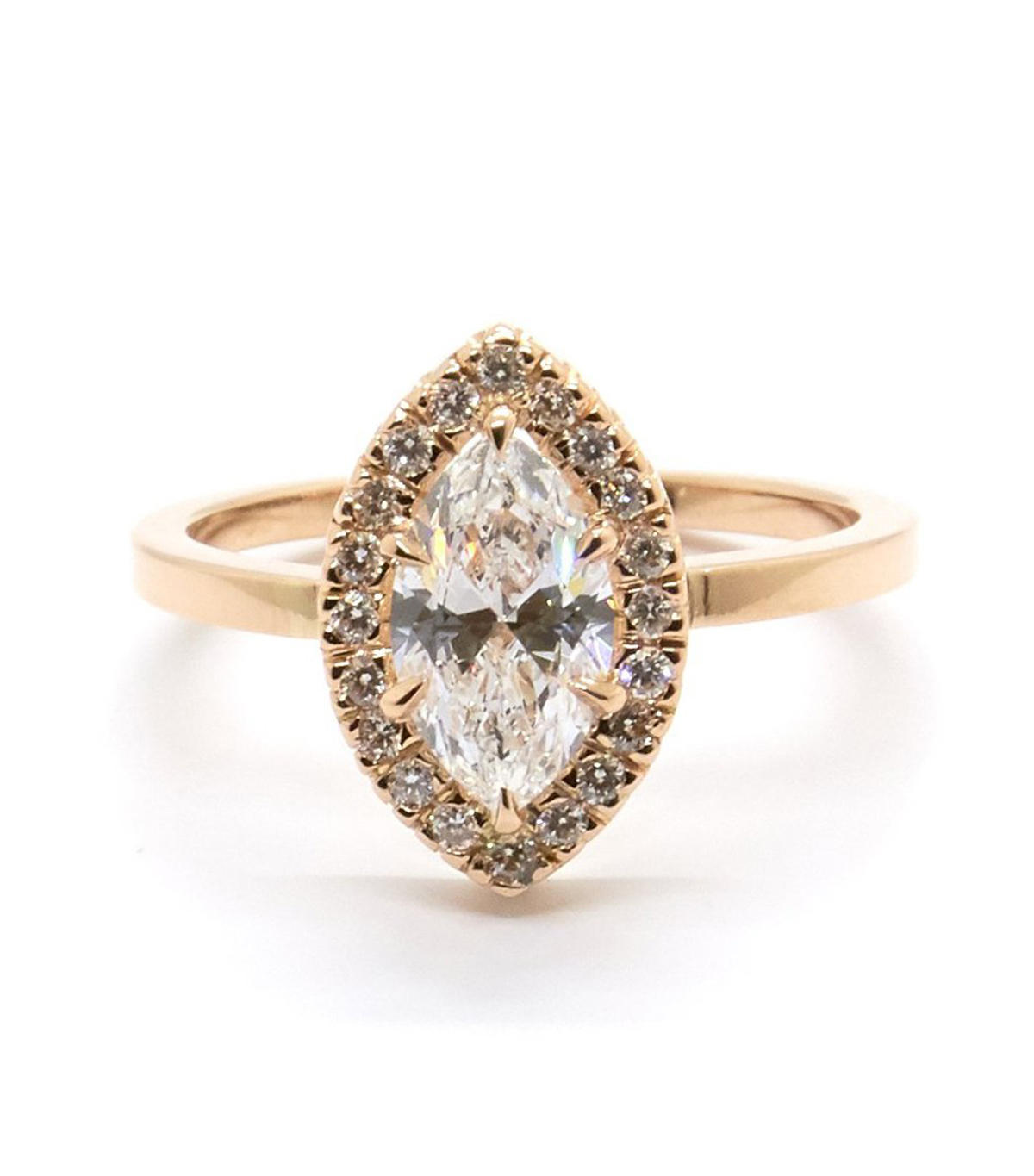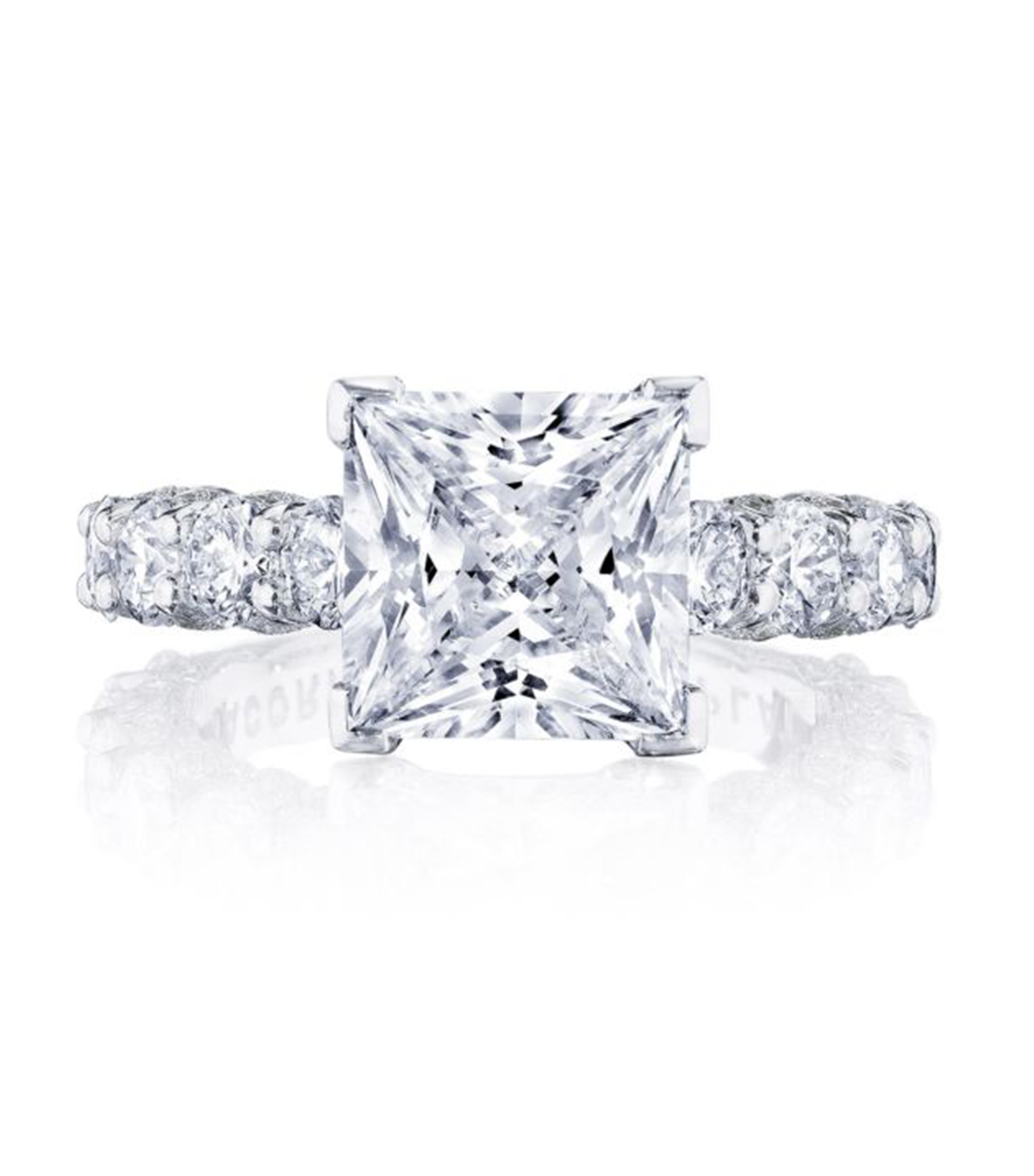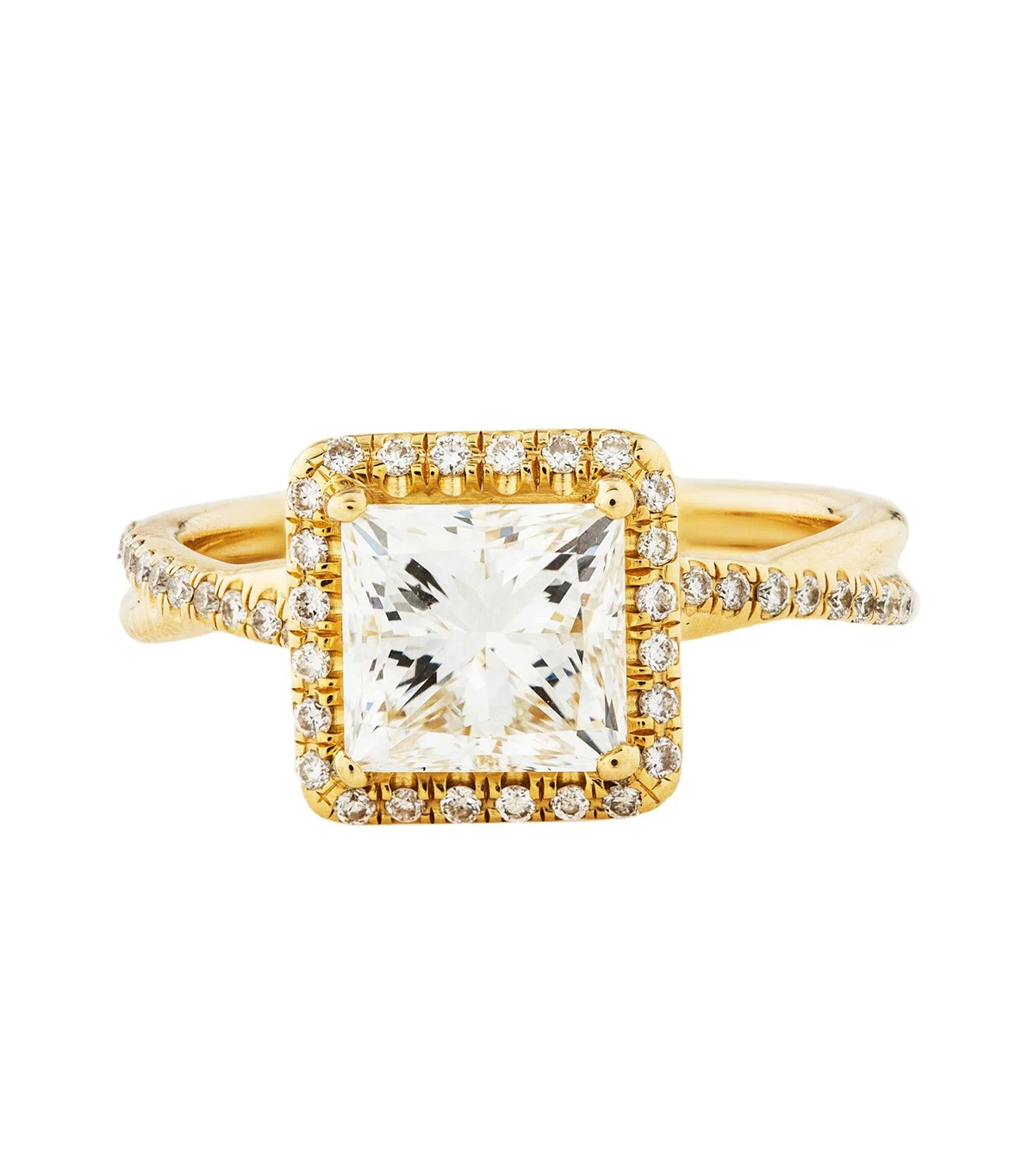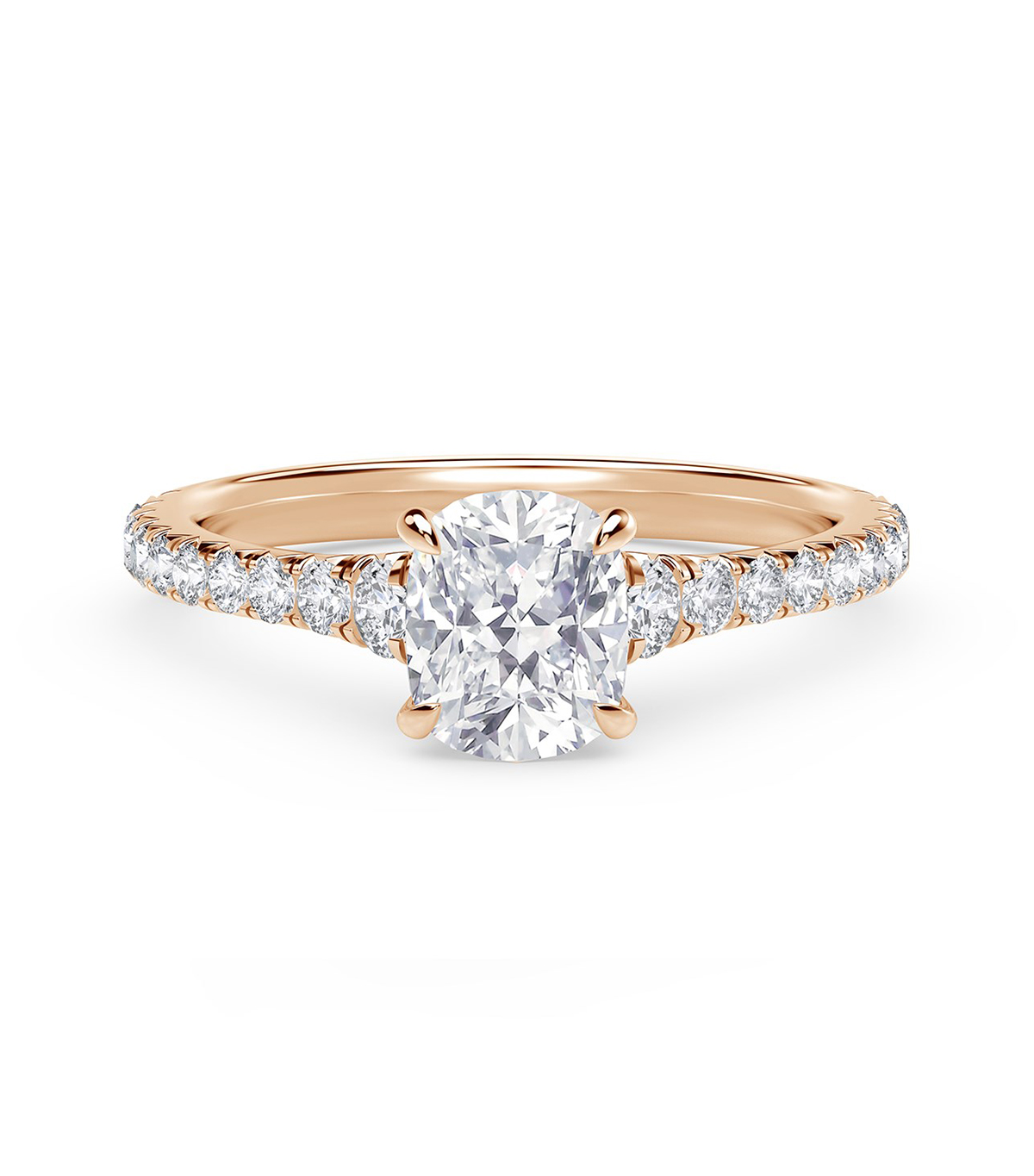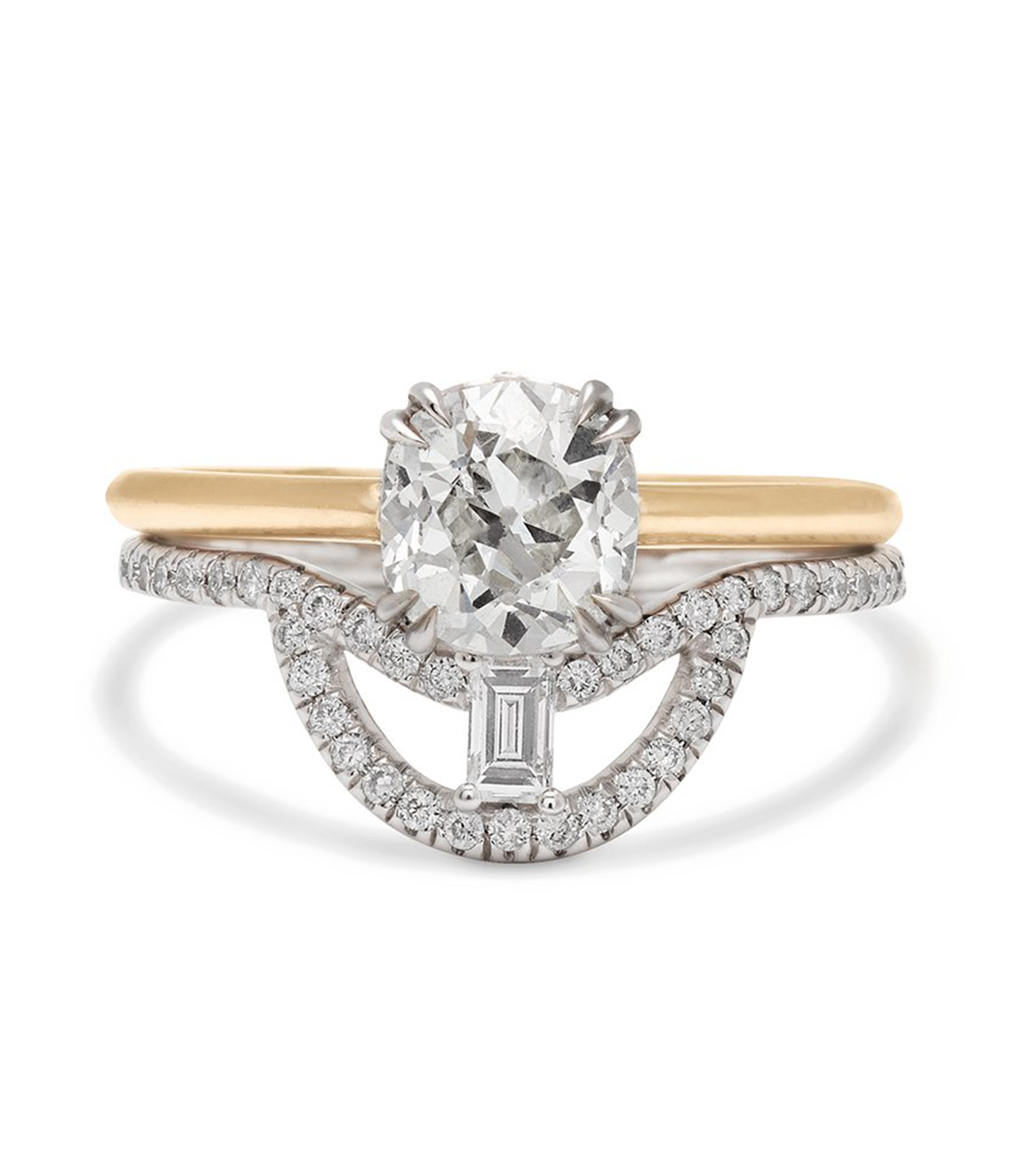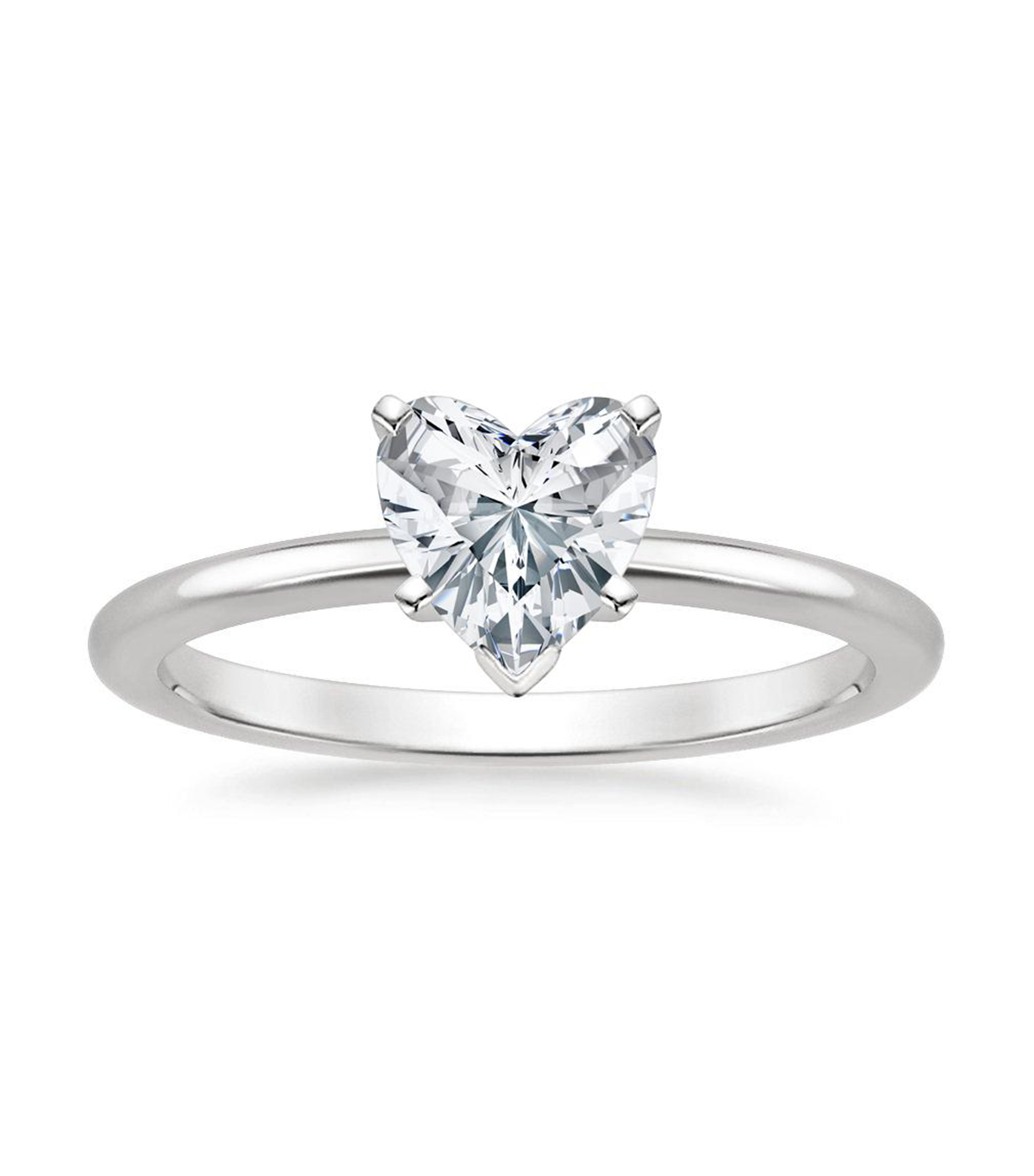The Pros and Cons of Every Type of Engagement Ring Cut
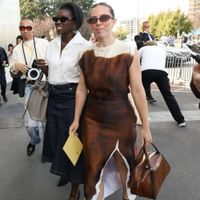
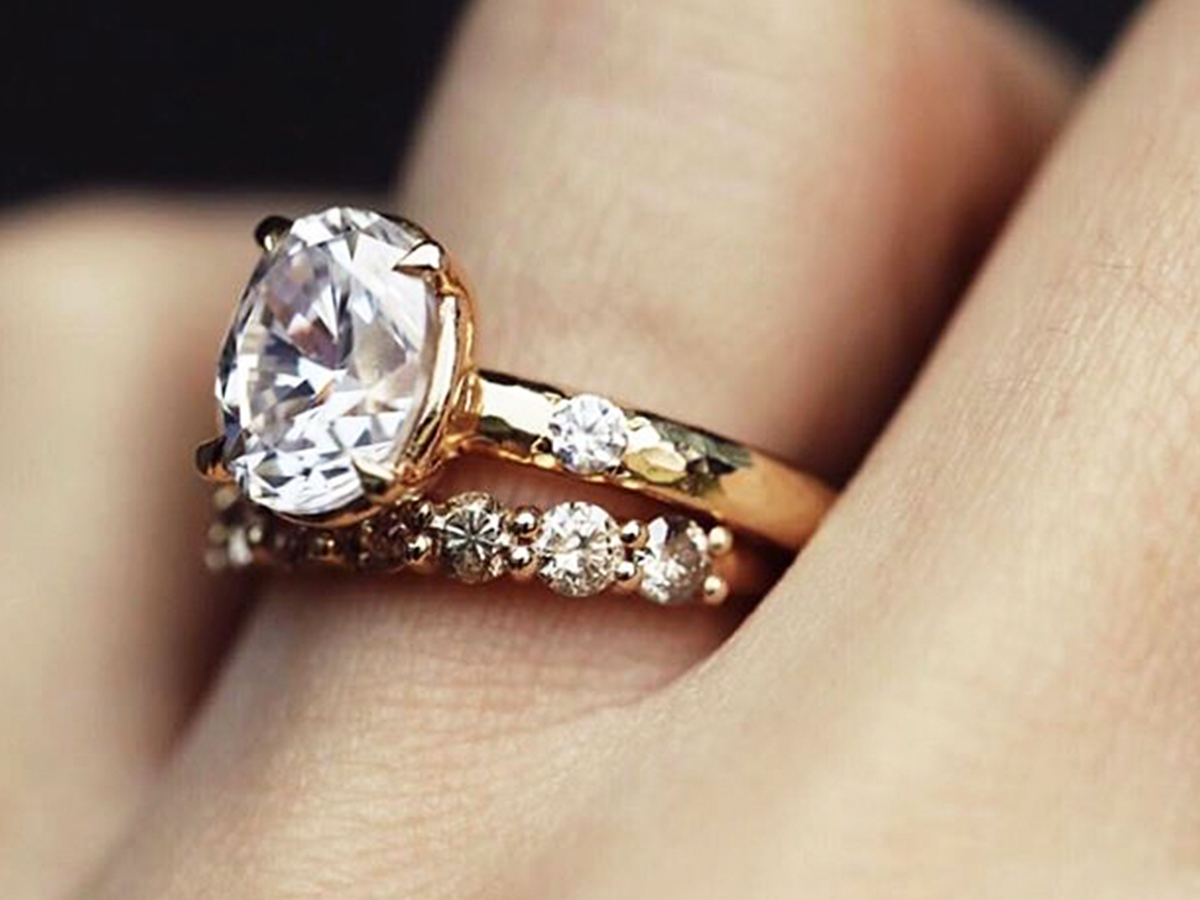
There's a lot to consider when deciding on an engagement ring. There's metal color, setting, diamond carat, and last but not least, the cut. Unless you're GIA certified in diamonds or gemstones, it's nearly impossible to be able to know all the intricacies of each engagement ring cut. You're probably familiar with the heavy hitters like round, emerald, and oval, but when it comes to the princess, cushion, and radiant cuts of the world, now that's where it gets a little dicey. Since I'm no diamond expert myself, although I would love to be, I reached out to one of my favorite jewelry designers, Octavia Zamagias of Octavia Elizabeth Jewelry, to give me the low-down on the pros and cons of every type of engagement ring cut. So before you set your heart on one specific cut, be sure to read up on the good and the bad when it comes to all the engagement ring world has to offer.
Oval
Pro: Elongates the finger
"This shape diamond is most popular with Octavia Elizabeth clients. The oval is classic and yet unique. One pro is that since this shape is essentially a modified round, it has similar brilliance to a round cut and bonus—they look larger than rounds and elongate a woman's finger!"
Con: The bow-tie effect
"The con is the infamous bow-tie effect. The bow-tie effect can be seen in the center of the diamond, and it literally looks like a man’s bow tie. It's caused by uneven light distribution and not enough depth. Usually, with stones I like to find a large table 'spread' so we can maximize the amount of diamond we see on a person's finger, but with an oval, you need to make sure that the diamond has more depth, thus minimizing the bow-tie.' Of course, if you don't mind the bow-tie, you can often get away with an even larger carat weight without added costs. Keep in mind that with ovals, you can't see if a stone has a bow-tie based on a grading report. Your jeweler needs to examine the stone in person from all angles."
Emerald
Pros: Elongates the finger and looks bigger than round cuts
"This is a personal favorite and the second most sought-after OE engagement ring shape (the first is oval). The emerald cut diamond is a step-cut faceted stone, and it doesn't offer the sparkle many people associate with a diamond. This is neither a pro nor a con, as with all shapes of diamonds, it's a personal preference. A pro is that it elongates the finger and can appear larger than its round counterparts. For example, an average 1-carat emerald-cut diamond measures 7-by-5 millimeters. An average 1-carat round measures 6.5 millimeters."
Con: Prone to showing imperfections
"The con of the emerald cut is that the quality can't be disguised as easily as a brilliant-cut diamond. Imperfections can be seen more easily in this stone, which can often be seen through like a window. Furthermore, emerald cuts can have the appearance of a black area if they're not cut well. A good jeweler will make sure that the cut of your emerald-cut diamond [has] a grading report and inspect the diamond in person from various angles."
Pear
Pro: Masks imperfections well
"Combining a round brilliant and a marquise, you get the pear-shaped diamond. It's an elegant option, but with a personality. The pros and cons of this style are similar to that of the oval—its brilliance can mask color and imperfections well. Like the oval, the pear elongates your finger."
Cons: Point can chip; bow-tie effect
"The downside is that there can be a bow-tie effect, and additionally, its sharp point can chip like the princess-cut diamond. This can be remedied by a V-tip-prong setting style or the wearer being extra careful."
Round
Pro: Has the most sparkle
"The round diamond has the most sparkle or what we diamond people call 'brilliance' of all the shapes. Additionally, because a round diamond has such a beautiful brilliance, you can hide flaws and mask color more with this shape."
Con: Higher price tag
"The most popular and widely worn diamond shape is the round. A pro, right? Not quite… As the most sought-after, it demands a bit more of a price tag and is the most expensive shape."
Asscher
Pro: Higher crown = more brilliant
"The Asscher can be thought of as the emerald cut's sibling. Though still considered a step-cut faceted diamond, it has a smaller table and higher crown, making it appear to be more brilliant than the emerald cut—a pro!"
Con: Can look smaller than other cuts
"The cons of this shape are that its table is often small and the depth of the asscher cut diamond is where the majority of its carat weight is held. The same buying guidelines apply for this shape as the emerald cut. The reason this is a con is that the "table” is the actual surface you see when setting the stone in a ring. The surface measurements of an asscher are smaller than other stone shapes of equal carat size. The majority of the weight of an asscher is in its depth. Bottom line—you need to be okay with a smaller looking stone or be able to afford the larger carat size to get a look that you’d like. "
Radiant
Pro: Lots of sparkle
"A great choice for those who love the shape of an emerald- or Asscher-cut diamond, but not the step-cut facets. This diamond has unique faceting that lends itself well to someone looking for the sparkle of a brilliant-cut diamond."
Con: High price tag
"The con of this style is that it can be more expensive because more raw material is lost when cutting this shape."
Marquise
Pro: Largest-looking
"Hands down the largest-looking diamond, in comparison to other shapes of the same carat weight. It elongates and slenderizes a finger, and has the largest surface area in comparison to any other shape. Like an oval and pear shape, marquise diamonds can hide imperfections well."
Con: Chips easily
"Neither a pro nor con, but it's worth pointing out that this shape is either loved or hated. If your partner has not mentioned this shape before, it's best to stay away and not go with this one for a true surprise engagement! Its pointed tips can chip, and it's best to set this style in a bezel or V-tip."
Princess
Pro: Very sparkly
"Second to round diamonds in brilliance or sparkle is the princess cut. Like the round diamond, these diamonds can hide flaws and mask color better than other shapes."
Con: Corners can chip
"The con of this style is that its sharp corners can chip. This style is best when set in a bezel to protect the stone."
Cushion
Pro: Less expensive
"The cushion cut or 'pillow cut,' as I call it, is a beautiful, romantic shape that's less harsh than your square, precise princess cut. Pros—it's one of the least-expensive shapes, and when you work with a good jeweler like myself and someone who's familiar with this cut, you can get a gorgeous stone at a very fair price."
Con: Tend to be poorly cut
"Cons of this shape are that they tend to be poorly cut and are therefore not known for their brilliance."
Heart
Pros: Sparkly; hides imperfections well
"An option for the true romantic. If you're after a heart-shaped diamond, I suggest viewing three side by side in person or with the help of a great video from your jeweler. The proportions of this stone can make the heart shape appear thin, fat, or just right. The majority of diamonds are cut to maximize carat weight, and beauty can come second. The pro of this diamond shape is that it'll sparkle and can hide imperfections like other brilliant-cut diamonds."
Con: Shape can get lost
"The cons are that the actual shape of this diamond can vary a lot, and you should shoot for a .75-carat heart-shaped diamond or larger so that the shape is not lost and apparent."
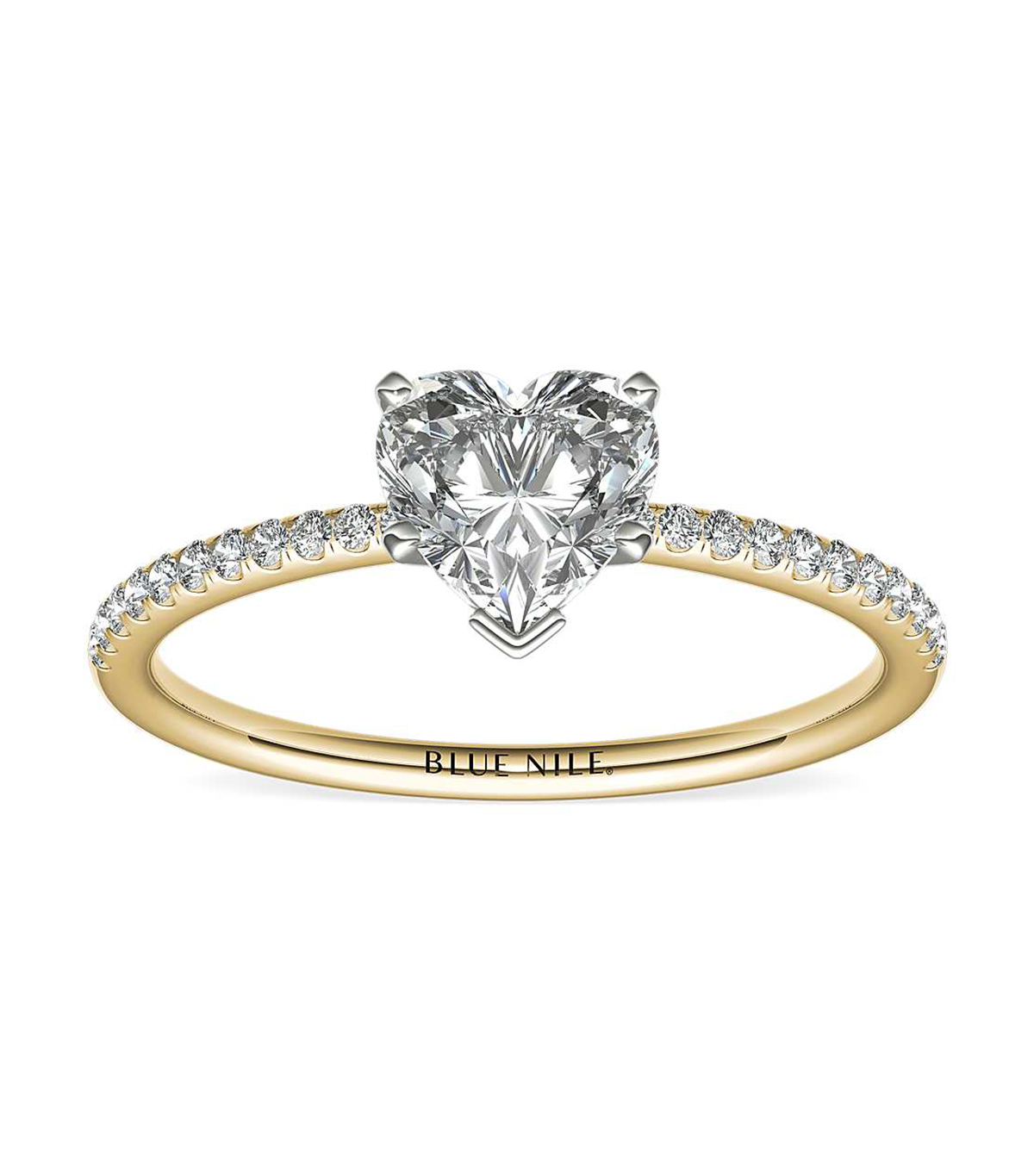
Prince includes setting only.
Next up, discover 15 fresh ways to style the #1 shoe style of the summer.

Lauren Eggertsen is currently the editorial director of Who What Wear and has worked at the company for over nine years, where she started as an associate editor and has since worked her way up. Lauren has worked in the Los Angeles and New York Who What Wear offices but currently calls L.A. home. Here, she leads and manages Who What Wear's editorial team and oversees all editorial content. Lauren's role also includes helping to set the fashion direction for all original photo shoots and often styles many celebrity cover shoots, including big names like Kaia Gerber, Normani, and Sabrina Carpenter. She has also attended multiple fashion weeks, including New York, London, Milan, and Paris, where her style has been featured on sites such as Vogue, Harpers Bazaar, and Elle.
-
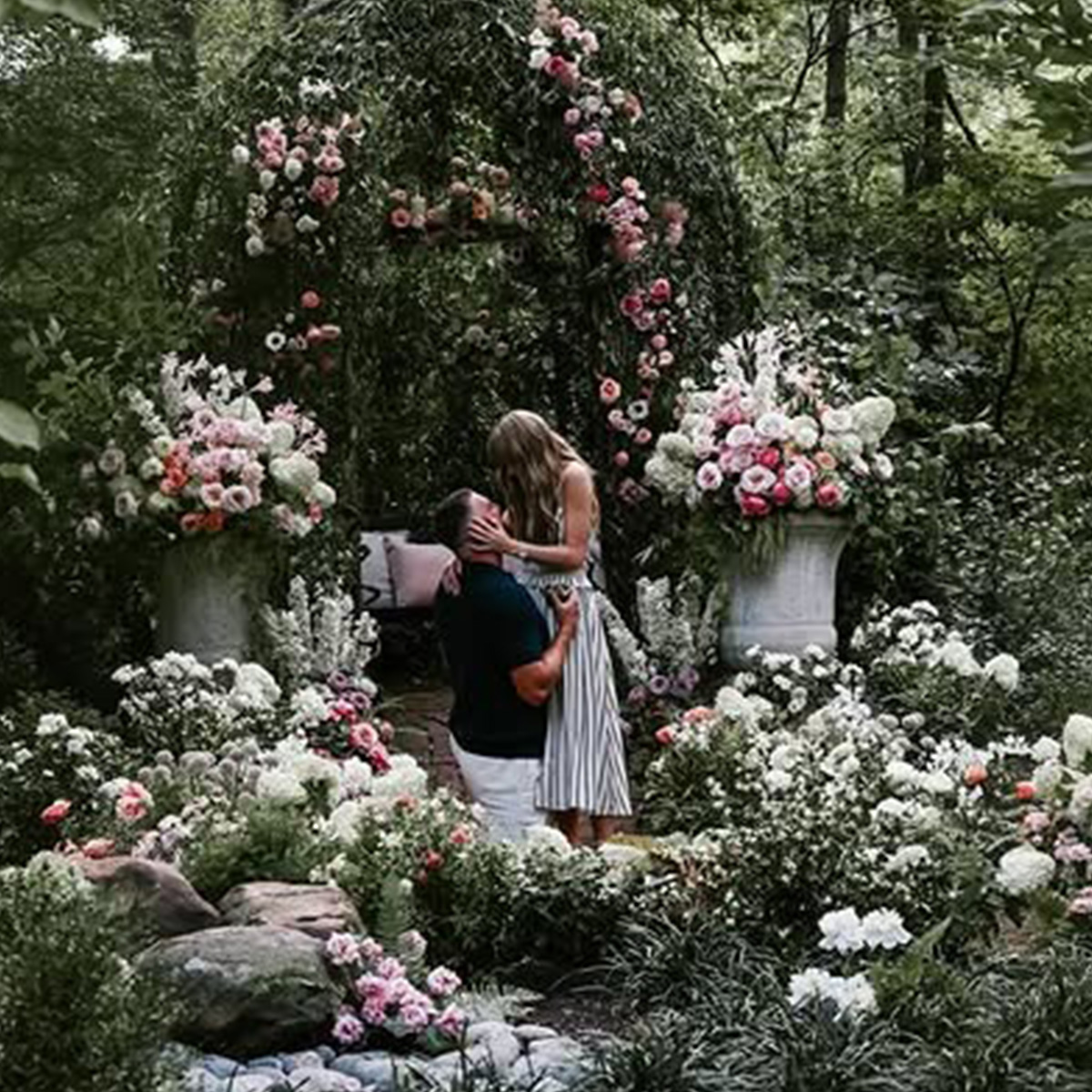 Taylor Swift Just Got Engaged in the Ring Trend You'll Be Seeing Everywhere for the Next Decade
Taylor Swift Just Got Engaged in the Ring Trend You'll Be Seeing Everywhere for the Next DecadeGuaranteed.
-
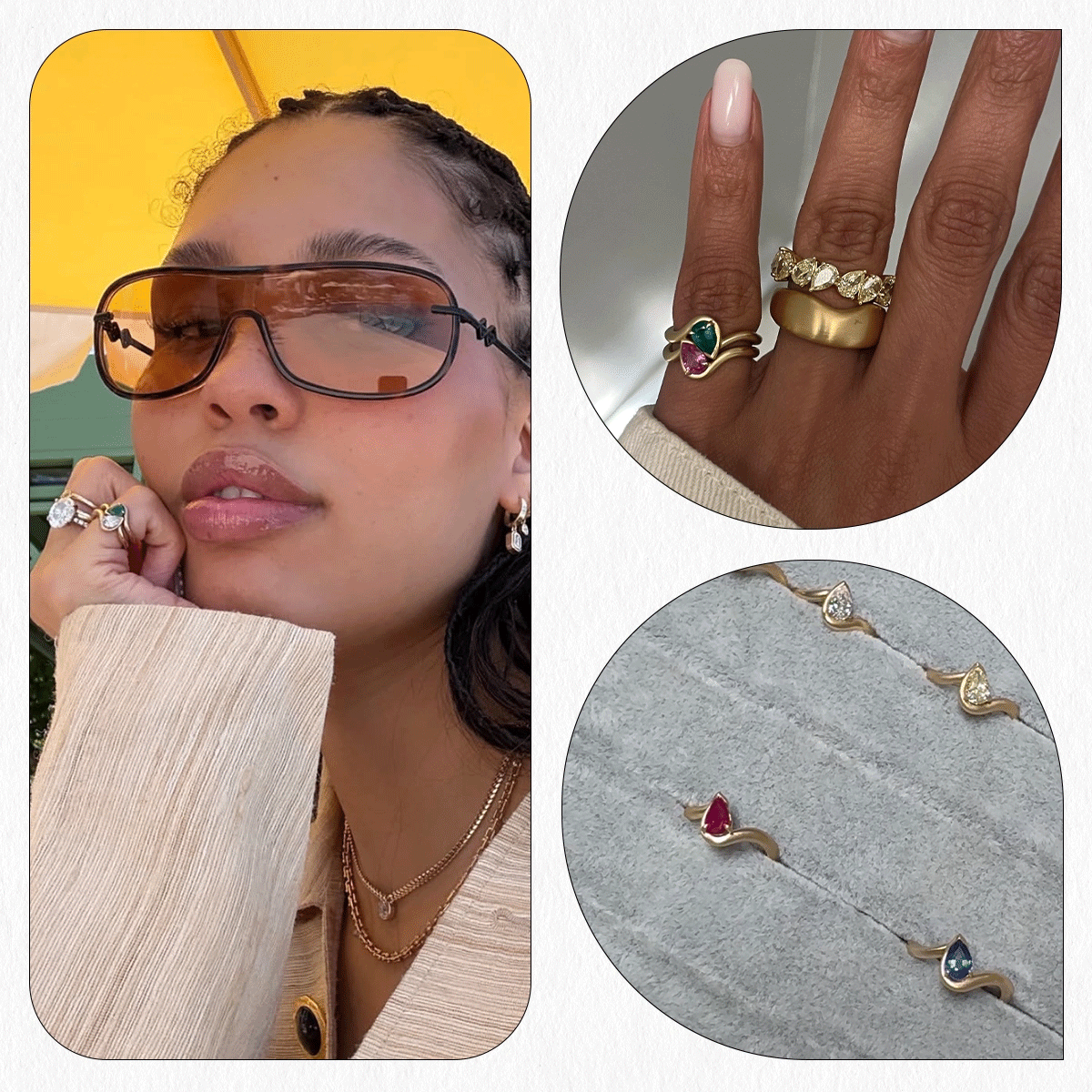 The Story Behind That Ring You Can't Stop Seeing
The Story Behind That Ring You Can't Stop SeeingIt's dainty, sculptural, and tasteful.
-
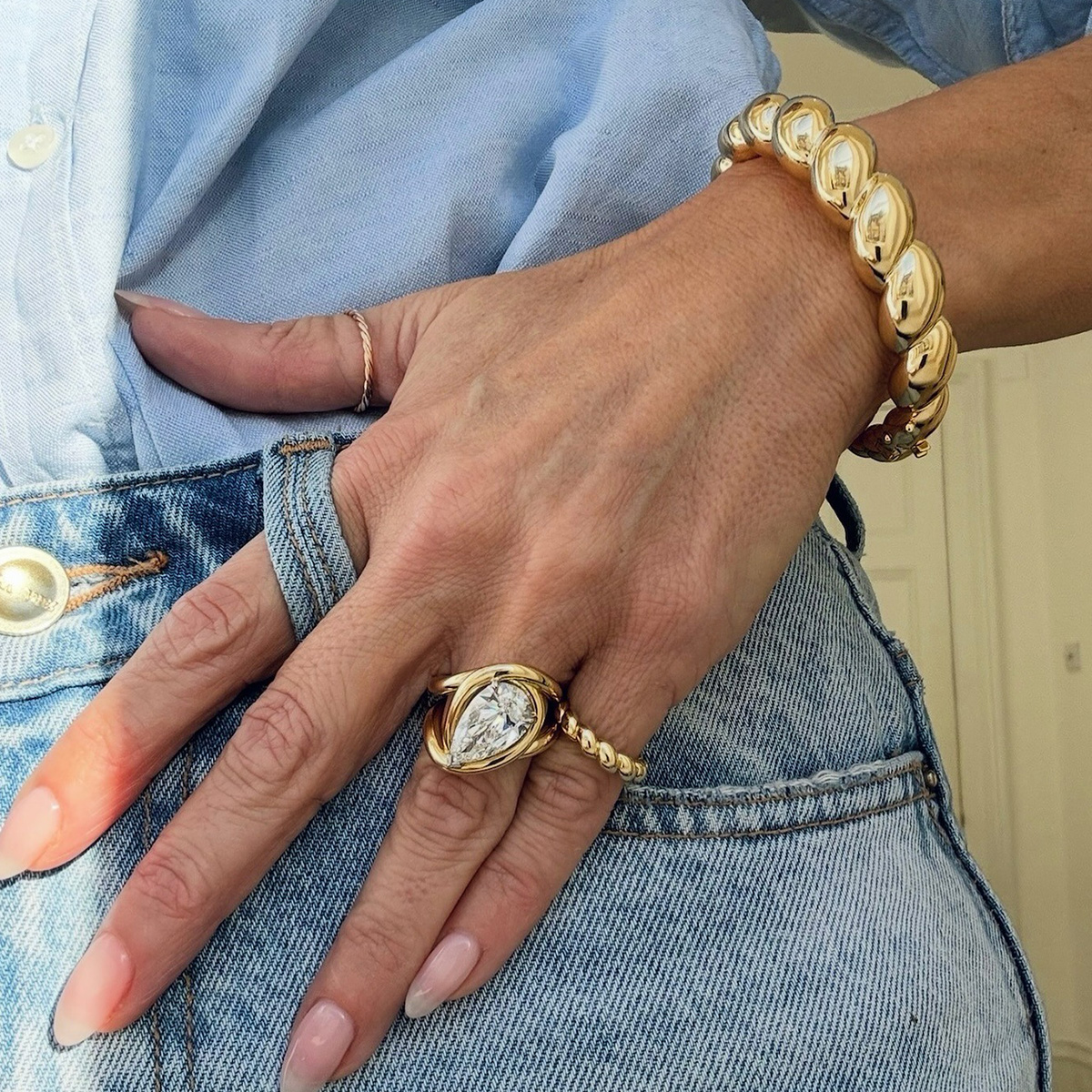 Something Old, Something New: Your Guide to the Best Luxury-Engagement-Ring Designers
Something Old, Something New: Your Guide to the Best Luxury-Engagement-Ring DesignersFrom a bride-to-be.
-
 Customizing an Engagement Ring Is Now Easier Than Ever Thanks to This Heritage Jeweler
Customizing an Engagement Ring Is Now Easier Than Ever Thanks to This Heritage JewelerBen Bridge's Bella Ponte collection is changing the game.
-
 Forget Oval—Selena Gomez Just Got Engaged With the Next *Huge* Engagement Ring Trend
Forget Oval—Selena Gomez Just Got Engaged With the Next *Huge* Engagement Ring TrendIt's dazzling to say the least.
-
 Nina Dobrev Just Got Engaged With a Massive Version of the Ring Style Hollywood Loves
Nina Dobrev Just Got Engaged With a Massive Version of the Ring Style Hollywood LovesMy jaw dropped.
-
 I'm a Luxury Jewelry Designer: 6 Investment Pieces That Will Last a Lifetime
I'm a Luxury Jewelry Designer: 6 Investment Pieces That Will Last a LifetimeDiamonds are Olivia Landau's best friend.
-
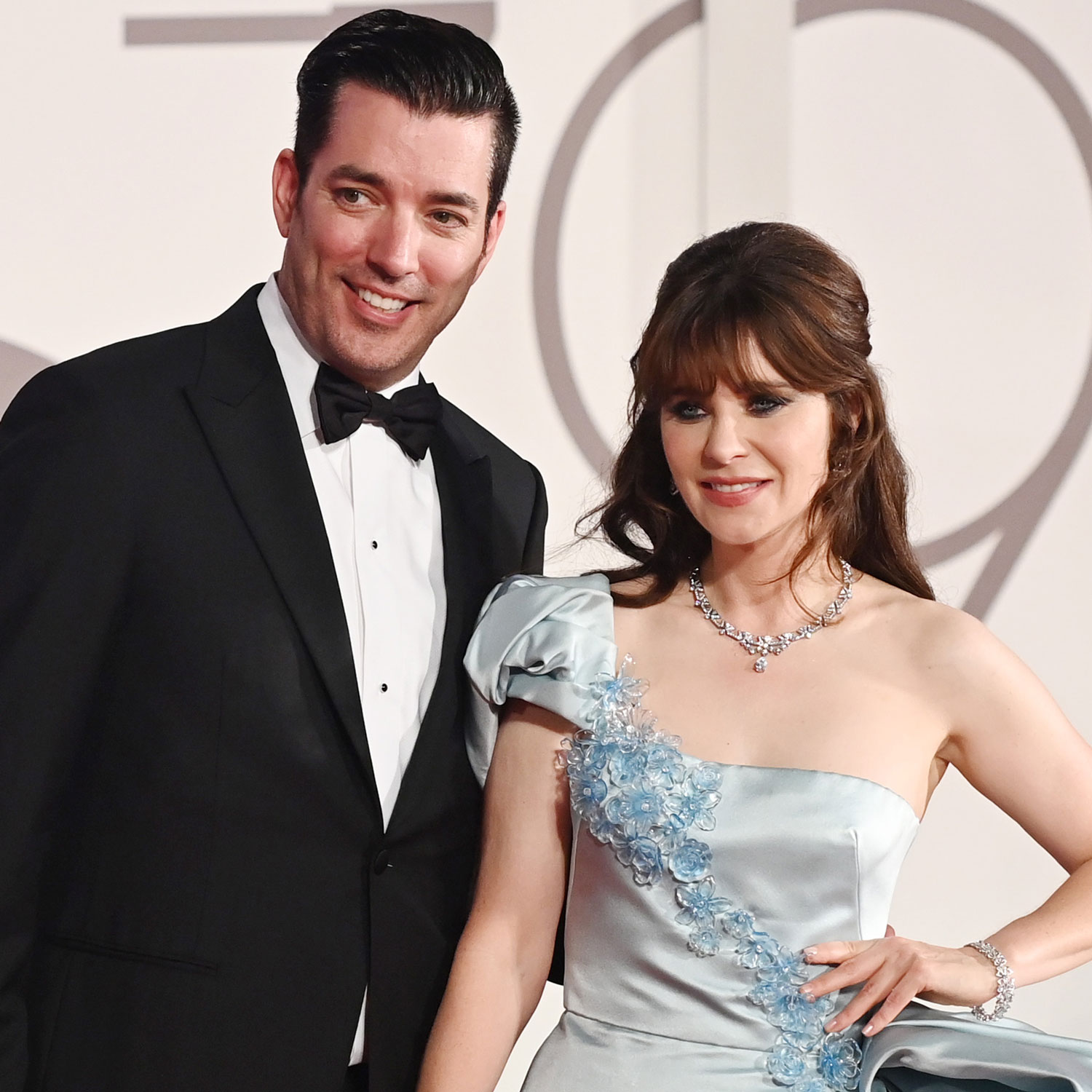 Zooey Deschanel Just Got Engaged—See Her Pink and Purple Floral Ring
Zooey Deschanel Just Got Engaged—See Her Pink and Purple Floral RingSo cute.
